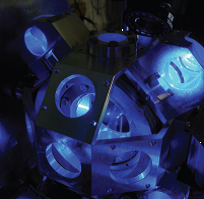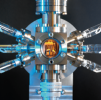WP3 Relativistic timescales and geodesy
Workpackage leader: Dr Pacôme Delva, OBSPARIS and UPMC
Other participants: CMI, INRIM, NPL, PTB, LUH
The aim of this workpackage was to evaluate all relativistic effects influencing time and frequency comparisons between optical atomic clocks, and their longer-term use for future realisation of International Atomic Time (TAI) and relativistic geodesy.

The first part of the work was to determine the gravitational redshift corrections for all the optical clocks that were compared within the project. This part of the work was led by geodesy experts from LUH, under the framework of a researcher excellence grant. For frequency comparisons between optical clocks, the gravity potential difference between the clocks needs to be known, whilst for contributions to international timescales the absolute gravity potential relative to a defined reference surface is also required. For optical clocks with a projected fractional accuracy of 10-18, an accuracy of about 0.1 m2s-2 in the gravity potential is required, which corresponds to about 1 cm in height at the Earth's surface.
An initial technical report set out the theoretical background for deriving the gravity potential, discussing uncertainty considerations, and making recommendations for the levelling and GNSS observations required at the clock sites. Based on these recommendations, levelling measurements were performed at INRIM, LSM, OBSPARIS, NPL and PTB. Gravity surveys were also carried out by LUH at all these locations, including at least one absolute gravity observation on each site and between 35 and 122 relative gravity measurements around each site. These measurements fed into the computation of a revised European quasi-geoid model (EGG2015), providing the best possible values for the absolute gravity potential at each clock comparison site. Time-varying tidal effects on the gravity potential were also studied.
Another part of the work was concerned with the relativistic description of the time and frequency transfer techniques used in the experiments carried out within the project. A method was developed for evaluating the relativistic effects relevant for two-way satellite time and frequency transfer (TWSTFT), and has provided critical input to a clock comparison campaign using a broadband version of this technique (WP5). A physical model was also formulated to describe the relativistic effects relevant to time and frequency transfer over optical fibre links, and the potential use of continuously operating transportable optical clocks for time transfer was investigated.
Finally, the theoretical framework was extended to include non-linear relativistic effects. The concept of a worldwide optical clock network for measuring the space-time geometry around the Earth was studied, with the aim being to lay the theoretical basis for global relativistic geodesy at unprecedented precision.

The research within this EURAMET joint research project receives funding from the European Community's Seventh Framework Programme, ERA-NET Plus, under Grant Agreement No. 217257.

